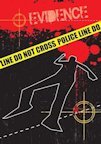Next week’s issue of the New England Journal of Medicine will contain an editorial, “Guns, Society and Medicine,” written by the Journal’s former editor, Jerome Kassirer. This editorial follows hard on the heels of another editorial, “Preventing Firearm Injury and Death” which just appeared in the Annals of Internal Medicine. The good news about these statements is that they appear to reflect a growing consensus in the medical community that physicians should play a more active role in the debate about guns. The bad news, it seems to me, is that the manner in which physicians appear to be lining up to engage in the debate may actually diminish the value of what they have to say.
The statement in the Annals, signed off by eight medical professional organizations (AAP, ACEP, ACP, etc.) calls for vigorous support of the following measures: universal background checks, elimination of physician “gag” laws, restrictions on the sale of assault rifles and high-capacity feeding devices, additional research, improved mental health services and avoidance of stigmatization through non-specific reporting laws. These measures were adopted by the eight medical societies after the American Bar Association confirmed that they did not conflict with 2nd-Amendment rights.
 In his NEJM editorial, Jerome Kassirer voices his support for these same measures but notes that gun-safety advocates appear to be losing the battle due primarily to the “reality that gun-control advocates are ’outgunned’ by the NRA.” It should be noted, inter alia, that in the twelve months following Sandy Hook, dues received by the NRA jumped more than 60% from $108 million in 2012 to $175 million in 2013, an increase due to the ability of the organization to sell the idea that the public outcry over what happened in Newtown would result in all guns being taken away.
In his NEJM editorial, Jerome Kassirer voices his support for these same measures but notes that gun-safety advocates appear to be losing the battle due primarily to the “reality that gun-control advocates are ’outgunned’ by the NRA.” It should be noted, inter alia, that in the twelve months following Sandy Hook, dues received by the NRA jumped more than 60% from $108 million in 2012 to $175 million in 2013, an increase due to the ability of the organization to sell the idea that the public outcry over what happened in Newtown would result in all guns being taken away.
I have been listening to gun-safety advocates bemoan the political power and financial muscle of the NRA for more than twenty years while, at the same time, researchers continue to publish articles which rightly demonstrate that the losses from gun ownership outweigh the gains. There simply is no question that scholars like Hemenway, Cook, Webster and so many others have produced a body of literature about gun risk that cannot be honestly challenged by the other side. But the other side isn’t interested in participating in a scholarly debate. The other side is interested in selling guns. And as long as guns are legal commerce, why shouldn’t it be up to the individual consumer to decide whether gun ownership represents a risk?
The answer to that question, and the role that I believe physicians should play in the gun debate can be found in a substantive piece of research that was also published this week in the Annals. This work covered the medical histories of everyone discharged in 2006-2007 from an ER in Washington State and found that the patients who were admitted for a gun injury, particularly if they had a previous gun or violence-related arrest, had a significantly higher chance of coming either back to the ER with another injury or winding up in the morgue. The research plan focused primarily on more than 9,000 patients who were treated for violent injuries, of whom 680 were in the ER because they were injured with guns.
What seems to be missing from the recommendations to reduce gun violence proposed by the medical associations and echoed by Dr. Kassirer is the fact that in the Seattle study, each of those 680 patients represented at least one direct, face-to-face contact with a clinician who had to deal with the medical risk of guns. Thanks to data mining, we know a lot about the demographic profiles of these patients, but only the physician who treated them was in a position to ask and possibly learn what happened, why it happened, and whether it would happen again. The answers to those questions and how those answers could shape policy, is a contribution to the gun debate that only doctors can make.
Recent Comments